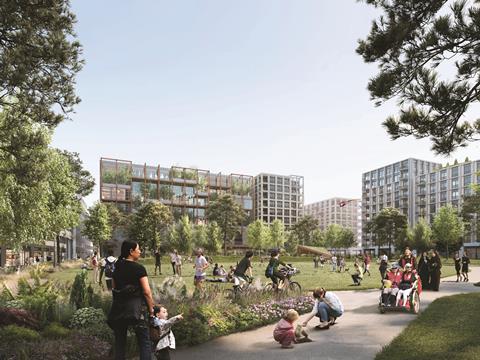With the long-term effects of the COVID pandemic still unknown, businesses should look to the Mayor of Paris for advice on how to improve the quality of life of their employees through the positioning of their London base.

Since March 2020, the trend in how people live and work has dramatically altered. Almost like a real-life test event, workers and businesses were forced to adapt their functioning model to continue to operate in the wake of a global pandemic. As a result, the importance of the neighbourhood had a resurgence in everyday life.
As we start to the emerge to a new form of normality, one thing that has yet to revert to pre-2020 norms is the focus on a healthier work-life balance even in one of the world’s biggest Central Business Districts. Back in 2019, the average commute time in the UK was 59 minutes, that’s 221 hours a year that employees have since reclaimed and a lifestyle that they are unlikely to hurry to return to.
Introducing the 15-minute neighbourhood. A concept proposed by Professor Carlos Moreno and popularised by Anne Hidaglo during her 2020 electoral campaign for the Mayor of Paris, the model proports the idea that everything essential to daily life should be within a 15-minute walk or cycle. It is developed around the idea of complete communities that cover six aspects of modern life including living, working, healthcare, education, commerce and entertainment and has already proved popular in the aftermath of the peak of the pandemic in cities such as Milan, Madrid, Seattle and Edinburgh.

The benefits of the model are based on a better quality of life and reinforced by the ever-growing implications of the commuter lifestyle on climate change; something that was noticeably subsident with carbon dioxide levels decreasing up to 17% between April 2020 and April 2021. In terms of the workforce, according to IWG, the desire to work closer to home is a priority for employees with 77% saying it would be significant factor in their next career move. Only one in four willing to venture more than 30 minutes away from their neighbourhood – an almost 50% reduction in travel time from 2019 averages.

The need for businesses to understand the impact of these trends is increasingly important at a time where employees are consistently revaluating their working life and looking to continue the finer work-life balance that they became accustomed to in 2020. The trend towards home-working may seem like a solution but in many businesses, there is no substitution for face to face collaboration and many studies have reaffirmed the importance of interaction with colleagues and clients as part of a healthier working environment.
The onus is on how local governments respond. With good design, investment and local infrastructure, smaller hubs can be formed outside of the Central Business District allowing businesses to thrive without sacrificing a face to face working environment. By decentralising some business hubs, neighbourhoods can thrive too.
Areas like Hammersmith, that have a high volume of working professional residents can benefit from more office-based solutions in the locale. The amenities in the area, combined with the access to green spaces, result in the ideal 15-minute neighbourhood that cities like Paris are striving to achieve. The additional benefit of having a direct route to Central London continues to allow businesses to interact with clients and challenge competitors without compromising on the ideals of a neighbourhood work hub and that of their local employees.
In the current pandemic context, and with office culture still hanging in the balance, the future of working could depend on the emergence of neighbourhoods that can satisfy both business and employee needs. This being achievable through the introduction of innovative work spaces, good design and the desire at a local level for complete communities.


